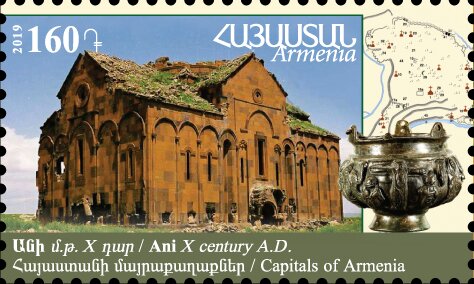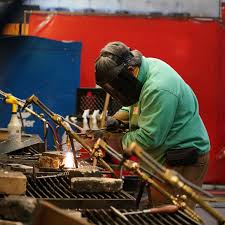Stamp: View of Ruins of Ani Cathedral (Armenia 2019)
View of Ruins of Ani Cathedral (Armenia 2019)
16 May (Armenia ) within release Historical Capitals of Armenia goes into circulation Stamp View of Ruins of Ani Cathedral face value 160 Armenian dram
| Stamp View of Ruins of Ani Cathedral in catalogues | |
|---|---|
| Colnect codes: | Col: AM 2019-07A |
Stamp is horizontal format.
Also in the issue Historical Capitals of Armenia:
- Stamp - View of Modern Yerevan face value 170;
- Stamp - View of Ruins of Ani Cathedral face value 160;
Stamp View of Ruins of Ani Cathedral it reflects the thematic directions:
A church building, often simply called a church, is a building used for Christian religious activities, particularly worship services. The term in its architectural sense is most often used by Christians to refer to their religious buildings, but it is sometimes used (by analogy) for buildings of other religions. In traditional Christian architecture, the church is often arranged in the shape of a Christian cross. When viewed from plan view the longest part of a cross is represented by the aisle and the junction of the cross is located at the altar area. Towers or domes are often added with the intention of directing the eye of the viewer towards the heavens and inspiring church visitors. Modern church buildings have a variety of architectural styles and layouts; many buildings that were designed for other purposes have now been converted for church use; and, similarly, many original church buildings have been put to other uses. The earliest identified Christian church was a house church founded between 233 and 256. During the 11th through 14th centuries, a wave of building of cathedrals and smaller parish churches occurred across Western Europe. A cathedral is a church, usually Roman Catholic, Anglican, Oriental Orthodox or Eastern Orthodox, housing the seat of a bishop.
Metalworking is the process of shaping and reshaping metals in order to create useful objects, parts, assemblies, and large scale structures. As a term, it covers a wide and diverse range of processes, skills, and tools for producing objects on every scale: from huge ships, buildings, and bridges, down to precise engine parts and delicate jewelry.
Ruins (from Latin ruina 'a collapse') are the remains of a civilization's architecture. The term refers to formerly intact structures that have fallen into a state of partial or total disrepair over time due to a variety of factors, such as lack of maintenance, deliberate destruction by humans, or uncontrollable destruction by natural phenomena. The most common root causes that yield ruins in their wake are natural disasters, armed conflict, and population decline, with many structures becoming progressively derelict over time due to long-term weathering and scavenging.



